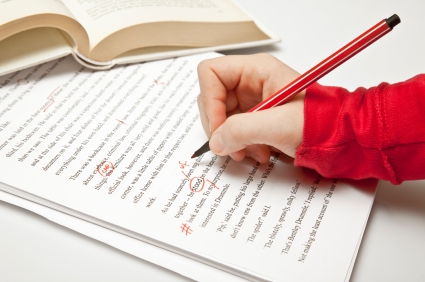

Technology has changed the standards for proofreading and copyediting, and even caused the roles to overlap in some situations. "Traditionally, proofreaders are responsible for finding errors during the typesetting or formatting of a final document," "On the other hand, copy editors work on draft information, correct inappropriate grammar, check word usage, and make sure the document follows the rules of English. The copy editor also checks the document for a consistent look and feel."
It is important to know that proofreading and copyediting are done at varying levels. Each requires different skills and experience. "A higher level of copyediting may be needed, for example, when the author is providing technical information to a non-technical audience"
Originally, proofreading was the late-stage correcting of material that had already been professionally set in type. Proofreading literally means"the reading and checking of proofs" against the original. Today, the term is generally used to mean the final checking of any text-based information.
Levels of Proofreading
Basic proofreading In basic proofreading, proofreaders check copy word-for-word against a marked-up draft and identify errors for correction. Basic proofreaders may also check for typographical errors, repetition of small words, and correct styles.
Editorial proofreading In editorial proofreading, proofreaders also check for errors in word usage (for instance, the use of to instead of too), hyphenation, and subject-verb agreement. If asked, editorial proofreaders can look for grammar problems (using which instead of that).They can also recommend changes in word choice or inappropriate punctuation. Editorial proofreading is usually done on material that has already been edited or reformatted.

Copy editors review finished copy for spelling, grammar, consistency, and format. In many ways, being a copy editor is like taking an English exam that never ends: one's knowledge of spelling, grammar, punctuation, word usage, and syntax is continuously being tested,"
At all levels of copyediting, copy editors correct errors, point out conflicting statements to the author, and request advice when the means of resolving a problem is unclear. Throughout all this, copy editors fix whatever is incorrect, confusing, ambiguous, or inappropriate.
Levels of Editing
Three levels of copyediting are normally adequate for most jobs: light, medium (standard), and heavy. An additional level, globalization copyediting, is used for information that is likely to be translated.
Light (baseline) copyediting Light copyediting is very similar to editorial proofreading but does a more thorough check of grammar rules.
Medium (standard) copyediting Medium copyediting also checks for style consistency and relationships between text and graphics. Table-of-contents entries and organizational problems are also corrected.
Heavy (substantive) copyediting The main difference between medium and heavy copyediting is the level of judgment and rewriting involved. In a heavy copy edit, editors try to improve the flow of text by rewriting portions to enforce a uniform level, tone, and focus. They change passive voice to active voice and add missing articles (a, an, the). They also rearrange sentences to improve readability. This is particularly true with technical copy. For example, the phrase "hermetic two stage gear drive compressor," is made more readable by adding a bit of punctuation, like this: "hermetic, two-stage, gear-drive compressor."
Globalization copyediting The globalization copy editor is trained in international and cultural issues and familiar with the challenges that translators face. In addition to all the normal functions of copyediting, globalization copyediting focuses on eliminating ambiguity of any form. The purpose is to make the translation process easier, while working with authors to ensure that changes do not affect technical accuracy of the information. The globalization copy editor also advises customers about aspects of writing that are affected by international publishing of information. This includes characters such as "#" and "&" that do not exist in some languages or have multiple meanings. Another problem area is dates, where 2/5/02 in the United States generally means February 5, but in most European countries, it means May 2.
